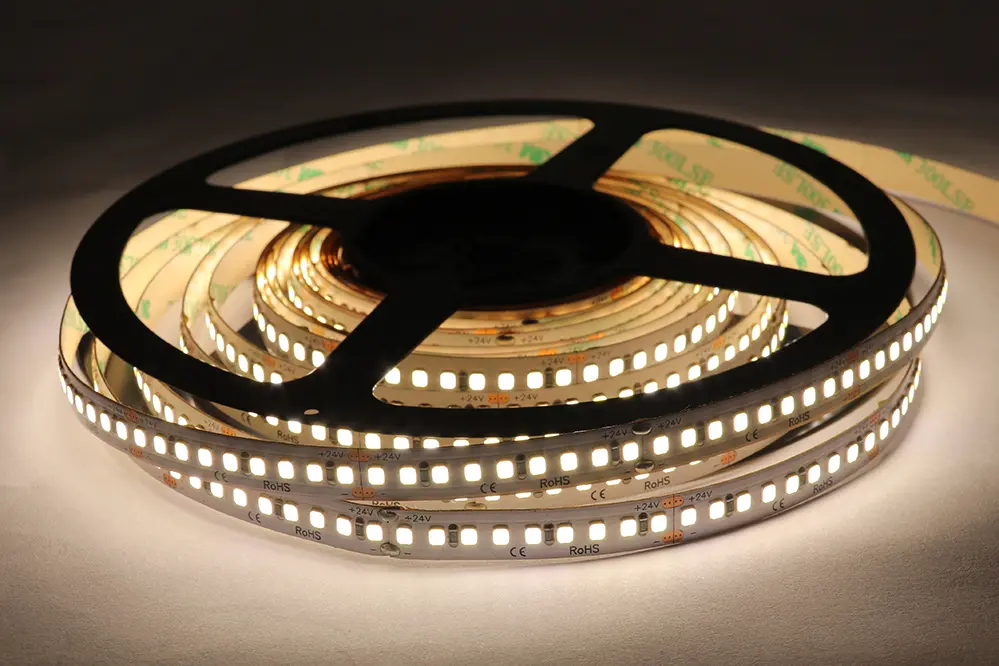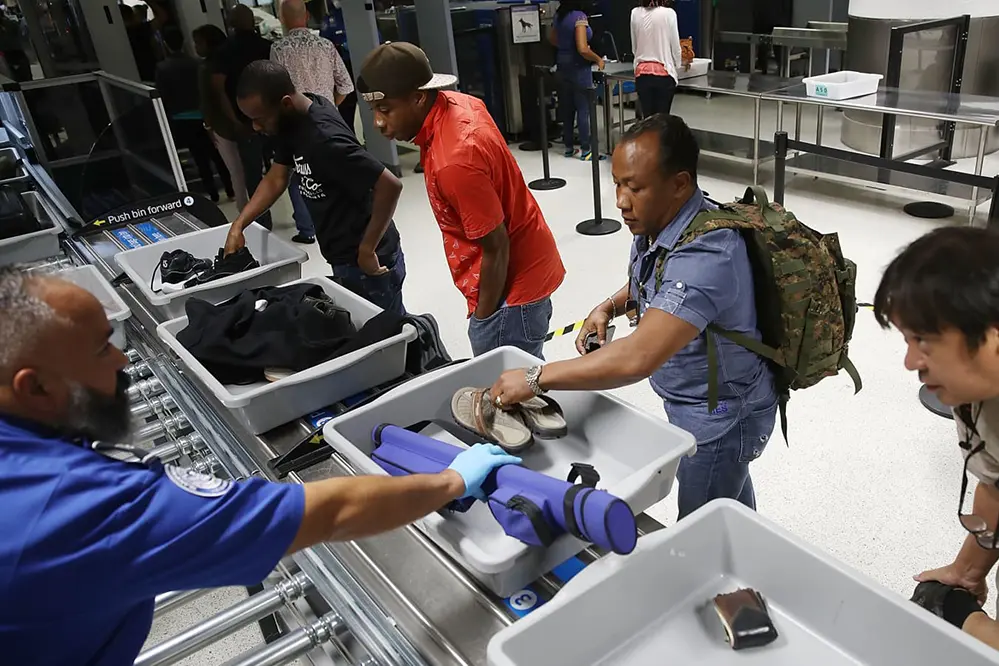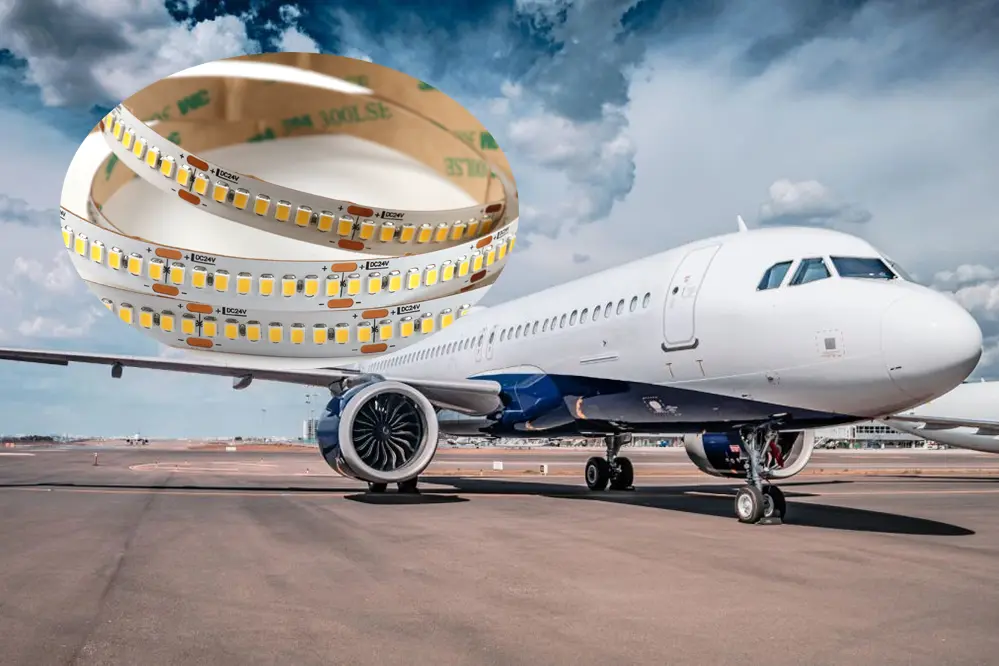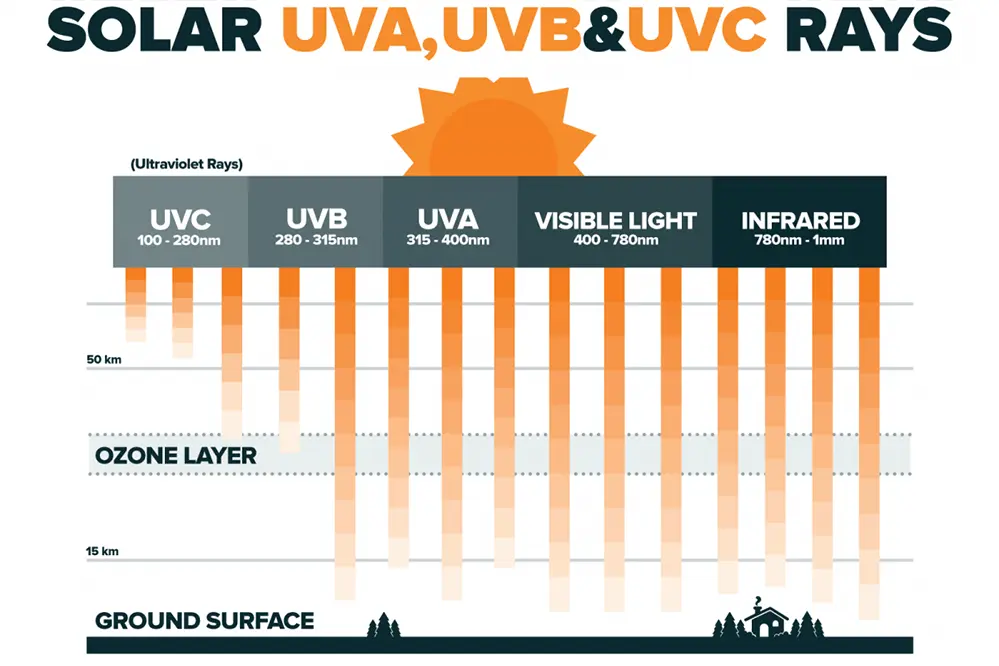Are you wondering about the rules for bringing LED strip lights on a plane? Look no further for a definitive answer to ease your travel concerns about flying with LED lights.
LED strip lights can generally be taken on a plane in carry-on luggage, and the same goes for other LED lights. However, it’s essential to check with the airline for any specific regulations or restrictions regarding batteries or electronic devices.
Explore our comprehensive guide to ensure a hassle-free experience when traveling with LED strip lights and other LED lights on an aircraft.
TSA Regulations

The Transportation Security Administration (TSA) typically permits LED lights, including LED strip lights, in both carry-on and checked luggage. These devices are generally considered safe and non-hazardous, making them acceptable for air travel.
For travelers with LED strip lights powered by separate batteries, special attention is required, particularly when it comes to handling and transporting the LED lights safely. It is important to follow TSA guidelines on battery transport, such as carrying spare batteries in carry-on luggage to prevent short circuits. Adhering to these regulations ensures a smooth security screening and compliance with safety standards on the aircraft.
Carry-On Guidelines
Carrying LED strip lights on a flight requires understanding specific carry-on regulations set by the TSA to ensure compliance with airline policies.
LED strip lights are generally allowed in both carry-on and checked baggage on an aircraft.
When packing LED strip lights, make sure the LED lights are stored securely to prevent damage during transit. It is advisable to use a protective case or original packaging whenever possible.
If your LED strips are powered by batteries, ensure the batteries are carried in your carry-on luggage and follow the relevant aircraft regulations regarding battery transport.
Checked Luggage Rules
When considering checked luggage, various rules, particularly for LED strip lights, need to be meticulously followed.
First and foremost, LED strip lights, if they do not contain any integrated batteries, are generally permitted in checked luggage. However, due to their delicate nature, care should be taken to pack them securely. This is to prevent damage from rough handling during the transport process.
Moreover, if the LED strip lights have power supplies or other electronic components, they should be well-protected. Utilize original packaging or a protective case to safeguard these electronics from potential impacts. Ensure that all connecting wires are appropriately bundled to avoid tangling or breakage, as this will facilitate smoother TSA security checks.
In addition to protective packing, it is wise to communicate with the airline regarding any specific restrictions or guidelines they may have for transporting LED strip lights. Different airlines might have varying rules, and verifying these in advance can help avoid any mishaps or last-minute complications. By taking these proactive steps, you ensure the safe arrival of your LED strip lights.
Potential Issues
Despite their general acceptance in checked luggage, LED strip lights may still encounter scrutiny during security checks. Security personnel might question the nature of the electrical components, potentially causing delays or additional inspections.
Furthermore, miscommunication or inconsistencies in airline policies can lead to unexpectedly denied entry of your LED strip lights, emphasizing the importance of prior verification and clear documentation.
Security Concerns

Security screening at airports often involves detailed inspections by TSA of electronic components, including LED strip lights and other items you might bring on an aircraft. Travelers should be prepared for additional questions and inspections.
Airport security personnel are vigilant about any unusual or unfamiliar items. LED strip lights’ wiring and circuitry can prompt thorough checks.
It’s advisable to keep documentation handy—such as product specifications or proof of purchase—to assist security personnel in quickly identifying the items. Proper labeling of your LED strips can also mitigate any misunderstandings and facilitate a smoother inspection process.
Labeling and documentation are useful when navigating varying international security protocols. Inconsistencies in global security standards mean it’s crucial to pre-empt potential hiccups by staying informed. While most LED strip lights pose no genuine risk, their appearance can trigger “red flags” with security, making conscientious preparation indispensable.
Damage Risks
LED strip lights, despite their durability, face distinct damage risks when transported via air travel. Factors such as handling, pressure changes, and temperature fluctuations can compromise their integrity.
Poor packaging is one primary cause of physical damage. Ensure proper cushioning.
If placed improperly in checked luggage, rough handling can lead to broken circuits.
Pressure changes in the cargo hold could affect sensitive components, impacting their functionality.
Temperature variations, especially during long flights or transfers, pose another risk. Extended exposure to extreme temperatures can degrade the adhesive backing or affect electronic components.
For optimal protection, use anti-static packaging materials and keep them in carry-on luggage when possible. This minimizes exposure to harsh conditions.
Pack light, and always ensure the strips are well-cushioned and secured. Meticulous packing goes a long way in safeguarding your LED strip lights from damage.
Packing Tips
When packing LED strip lights for air travel, a number of considerations are paramount. Ensure that you use anti-static bags to prevent any potential electrostatic discharge. Cushioning materials such as foam or bubble wrap are essential to safeguard against physical shocks. Organize the strips into coils to prevent tangling, and use cable ties to secure them. Additionally, place the packed lights in a sturdy, crush-resistant container for added protection. Carry the container in your carry-on luggage to maintain control and minimize exposure to fluctuating temperatures and pressures.
Protecting the Lights
Properly protecting LED lights, specifically LED strip lights, during air travel is crucial to maintain their functionality and longevity.
- Use anti-static packaging to prevent damage from electrostatic discharge.
- Cushion with foam or bubble wrap to protect against physical shocks.
- Coil the strips neatly to avoid tangling.
- Secure coils with cable ties to keep them in place.
- Use a crush-resistant container for added protection.
- Carry in your carry-on luggage to avoid harsh conditions in checked baggage.
Ensuring the strips are well-packed minimizes the risk of damage during transit.
Adhering to these steps significantly increases the likelihood of your lights arriving intact and ready to use.
Labeling Advice
Proper labeling of your LED lights is paramount for hassle-free travel.
Clearly labeling your LED strip lights can make them easily identifiable. This step not only helps during security inspections at airport checkpoints but also can serve as a helpful identifier in the event of lost luggage. Labeling, coupled with a list of the contents, can expedite the identification process and ensure the safe return of your items.
Tags should include your contact information.
Labels ought to be robust enough – use hardy tags that can withstand the rigors of travel – and contain important identifying information. Consider using heat-resistant labels to avoid melting or smudging.
Correct labeling will streamline security processes and foster a seamless travel experience. Familiarize yourself with any airline-specific regulations to ensure compliance.
Alternative Options
If taking LED strip lights on a plane seems too cumbersome, shipping them via courier services might be a practical alternative. Couriers specialize in handling fragile goods with care, minimizing the risk of damage.
Additionally, you might consider purchasing LED strips at your destination, ensuring compatibility with local voltage standards.
Shipping Ahead
Shipping LED strip lights ahead can be a convenient solution to avoid the hassle of carrying them on a plane.
- Choose a Reliable Courier: Ensure the service is reputable and experienced in handling fragile items.
- Use Appropriate Packaging: Secure the LED strips with anti-static bubble wrap and sturdy boxes to prevent damage.
- Insure Your Shipment: Select insurance coverage that protects against loss or damage during transit.
- Track Your Package: Opt for a courier service that offers real-time tracking to monitor your shipment’s progress.
- Consider Customs Regulations: Make sure to comply with any import/export regulations for electronic goods.
This method allows you to manage the shipment process without additional stress.
By shipping in advance, you can ensure your LED strip lights arrive safely and on time.
Buying Upon Arrival
Purchasing LED strip lights upon arrival can be a practical and straightforward solution for many travelers.
- Local Voltage Compatibility: Ensure the LED strips match the local electrical standards.
- Product Availability: Check if the desired LED strips are available at your destination.
- Warranty Considerations: Purchasing locally may facilitate easier returns or warranty claims.
- Regulatory Compliance: Local products are more likely to meet regional safety and regulatory requirements.
- Immediate Availability: No waiting for shipping; obtain your LED strips directly from a store.
This approach allows you to avoid potential issues with transportation and import regulations.
Buying upon arrival gives you the opportunity to inspect the product firsthand for quality assurance.
Moreover, it eliminates concerns about compatibility with local electrical systems.
Conclusion
In conclusion, traveling with LED strip lights is generally feasible, given certain precautions. Ensure these lights comply with TSA travel regulations. Pack them properly.
Research carrier-specific policies regarding electronic devices.
It may be prudent to keep the lights in your carry-on luggage.
This approach minimizes risk of damage during transit.
Remember, verifying local voltage compatibility is critical if you plan to use these lights abroad.
Taking LED strip lights on a plane is straightforward with proper planning. Safe travels!





